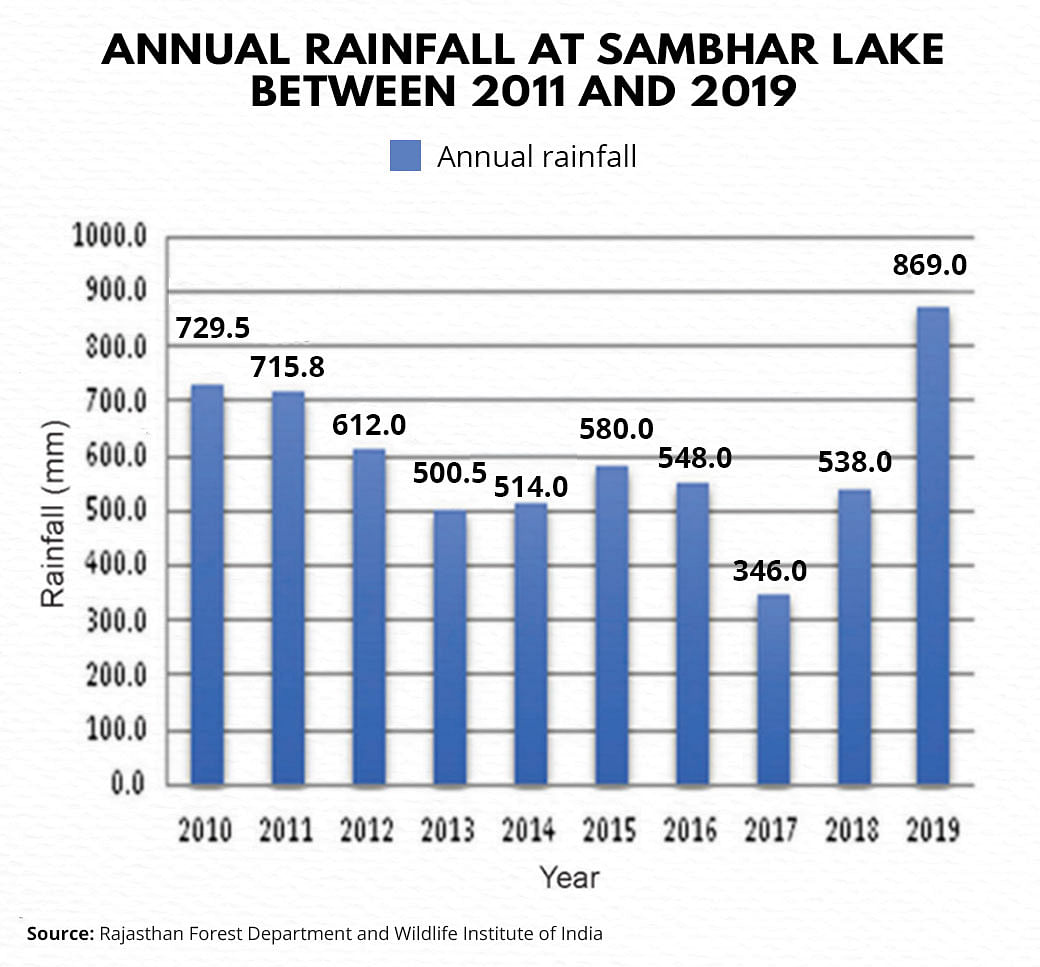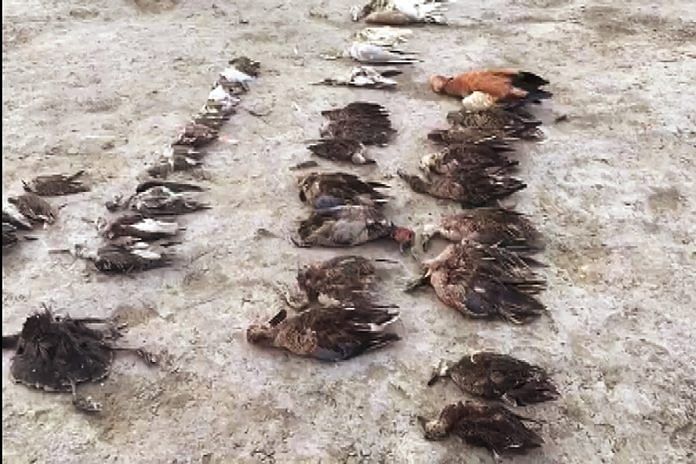New Delhi: Four years after the mass avian mortality of 2019 in Rajasthan — where nearly 23,000 birds died at Sambhar Salt Lake due to avian botulism in November — scientists have found that excess rainfall caused an unexpected surge in the toxic bacteria that killed them.
This was the first recorded mass mortality event due to avian botulism in India and affected several species, including migratory birds like Northern Shovelers from Europe and Pallas’s Gulls from Mongolia and Southern Russia.
New research published on 25 February in the journal Current Science shows that as a result of more-than-normal rain during July and August 2019, salt levels in Sambhar Salt Lake dropped, creating the perfect conditions for Clostridium botulinum — the bacteria that causes avian botulism — to thrive. The study was conducted by researchers from the Rajasthan Forest Department and the Wildlife Institute of India.
Avian botulism is a paralytic disease caused by Clostridium botulinum, which produces botulinum toxin. The toxin can cause paralysis and death not only in birds, but also in humans.
The researchers also observed in the study that there were no bird deaths in freshwater lake Ratan Talab, which is about 55 km away from the Sambhar Lake.
The study discounts an existing theory — that the surge in bacteria could have been a result of excessive and illegal salt mining in the area.
Also Read: Vultures make a soaring comeback in India. Next 6 months crucial to ensure their safety
Excess rainfall in 2019
Upon analysing the annual rainfall trends in the area, the researchers noticed that in 2019 the area had received the highest amount of rainfall in that decade.

“This might have led to the filling up of the lake area, leading to the formation of new marshy areas and wetlands with a large congregation of migratory birds. Low salinity of water due to heavy rainfall created a conducive environment for the growth and proliferation of invertebrates, crustaceans, and planktons — which harbour C. botulinum in their bodies,” the study says.
Once the water levels began to recede, there may have been an increase in the salinity levels, resulting in the death of crustaceans, invertebrates, and planktons.
The dead organisms further allowed the C. botulinum to multiply, thereby accumulating toxins.
After the death of these birds, the carcasses were infested with maggots known to bio-accumulate botulinum toxin. New birds that feed on maggots also succumbed to botulinum toxin, thus establishing the maggot-carcass cycle, the research says.
Why it happened
Sambhar Salt Lake is India’s largest inland saline wetland spread over 230 sq. km, spanning three districts — Jaipur, Nagaur, and Ajmer. Fed by four seasonal rivers — Mendha, Runpangarh, Khandel, and Karian — the lake has a 5,700 sq. km catchment area and is an extensive saline wetland, with water depth fluctuating from 60 cm (24 in) during the dry season to about 3 m (10 ft) at the end of the monsoon season.
In November 2019, local residents and bird watchers noticed dead birds in and around the lake. Over the next few days, a total of 22,983 dead migratory birds, including pelicans, flamingos, and other species, were found dead in Jaipur and Nagaur.
The incident set alarm bells ringing, and samples were eventually collected to find the cause.
Eventually, a study conducted by the Indian Veterinary Research Institute, Bareilly, concluded that the deaths were a result of avian botulism. But, until now, it was still unclear why there was a sudden surge in the bacteria.
The event raised concerns over the impact of human activities on the environment, especially on wetlands. The Hindustan Salts Limited, a public sector company, and the Rajasthan government oversee salt production operations in the area, and, since the lake accounts for 9 per cent of India’s total salt production, some experts suggested that water may have become toxic because of illegal salt mining.
The new study, however, discounts this theory — researchers say that the fluctuating water levels in the monsoon season helped the bacteria grow and thrive.
According to the study, the factors favouring the growth of C. botulinum were low salinity levels, temperature more than 25 degrees Celsius, pH between 7 and 9, dissolved oxygen level below 4, high chemical oxygen demand, presence of invertebrates, crustaceans, and planktons, and the presence of maggot-infested carcasses in the lake area.
“In 2019, the high rainfall raised the water level of the lake area by filling previous comparatively drier areas. The bacterial spores already present in those newly waterlogged areas proliferated massively, causing the high rate of mortality,” researchers said.
The study added: “Additionally, there has been a cycle of increase and decrease in water level due to three spells of rainfall, leading to increased anaerobic conditions which promote these bacteria.”
The changing levels of salinity may have promoted bacterial growth, the research says.
“This case is an eye-opener to ensure future monitoring and conservation of the Sambhar Lake Ramsar site,” researchers said.
(Edited by Uttara Ramaswamy)
Also Read: Is India’s Project Tiger going off script? Big cat deaths from Corbett to Pench to Kanha



